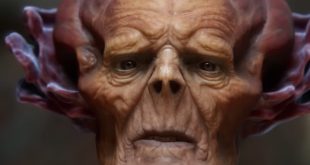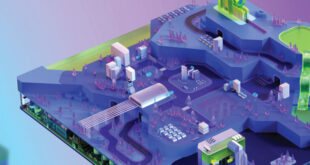Launching today, Republique Remastered is the enhanced PC version of Camouflaj’s episodic stealth game for mobiles.
Designed to bring a console-quality experience reminiscent of the Metal Gear Solid series to smart devices, Republique was built with indies’ favourite game engine, Unity. But while the mobile version was developed with the currently available Unity 4, Camouflaj worked with Unity Technologies in Unity 5, the next iteration of the tech.
We caught up with Camouflaj founder Ryan Payton to find out how he gained access to the upcoming technology, how it differs from the previous version, and how it enabled him to raise the bar for Republique on PC.
How did République Remastered become the first commercial game to use Unity 5? How did this partnership come about?
Our collaboration with Unity resulted from a meeting I had with them last summer about using our upcoming PC and Mac release of République as a platform to showcase Unity 5. This idea just came out of desire to do something unique and special with our desktop release, and we couldn’t think of a better way to give the consumers something special than to completely remaster the game using Unity 5’s new graphical features.
From there, we agreed to be an early test case for Unity 5 and to work directly with key Unity engineers. The release of République Remastered is the result of an amazing effort from both teams, and the game has benefited greatly from all the iteration and technical back-and-forth.
Was there pressure to make the most of the engine’s new and improved features?
Technically, République Remastered isn’t the first Unity 5 game, but it is the first game that fully embraces all the new graphical features like physically-based shading and Enlighten. We’re certain that developers will be looking to the game as an example of what Unity 5 can do, so we definitely felt the pressure. While it was difficult wading through the alpha and beta bugs and not having much documentation, the raw power of Unity 5 is what really shines through.
Back in September, as an early test, we decided to take a single room from Episode 1 and make it physically-based. In only three or four days, we saw just how powerful Unity 5 was out of the box and how beautiful it made our game. From there, we knew that this was the killer feature that would give our PC and Mac release the special sauce we were searching for, and that it would be a good showcase game for our friends at Unity.
How accessible were the new features? How did your experience with previous iterations of Unity help?
We’ve been working in Unity since 2011, so I’d like to think we’ve developed a level of comfort with the Unity engine. Of course, we’re putting our money where our mouth is each time we move to a new version during production. République Remastered will actually ship on a beta version of Unity 5, not the final product.
However, our experience with previous beta versions of Unity helped us better answer questions like, “What’s going wrong with our game?” as opposed to “Is this a bug in the engine?” Since we had our answer right away, we could immediately get working on a solution, or bring that to the engineers at Unity and get it resolved. It’s been a fruitful collaboration.
What have been the biggest differences developing République in Unity 5 compared to the mobile version?
When you’re developing on mobile – especially something that’s graphically ambitious like République – optimising the game can be a painful process. We had to make concessions for things like the lighting, which was frustrating because so much of our game comes down to mood and dark tones. Deferred lighting and baking detail into the textures just didn’t give the game the sense of realism that we were aiming for, but despite these concessions, I’m still really proud of what the guys were able to do on mobile with Unity 4. We still get compliments about the game’s graphical fidelity on iOS and Android to this day.
Pivoting to desktop, we can finally unclamp our high-res textures and embrace Unity 5’s physically-based shading and real-time global illumination, giving the game a much more realistic look and feel. Because Unity 5’s headlining graphics features are all based on real-life properties, it was amazing to see just how quickly the team was able to produce strikingly detailed and realistic environments once they went through the process of converting our assets to physically-based.
As an early test, we took a single room from Episode 1 and made it physically-based. In only three or four days, we saw just how powerful Unity 5 was out of the box and how beautiful it made our game.
In terms of strategy, République on mobile remains to be our attempt to reach a broad audience that may not be otherwise exposed to high-spec, narrative driven games. We’re proud of the work we’ve done on iOS and Android, and we’re committed it to for the long haul.
Now that Camouflaj’s focus has shifted to PC and Mac consumers with République Remastered, it feels like a homecoming. The team at Camouflaj is made up mostly of hardcore PC and console players, so our PC/Mac release become something of a passion project for us, and a celebration that we can finally bring the game to the platform that most of our fans have been requesting.
That said, we are expecting a whole new set of challenges once the game is released on Steam, Humble and GOG, although it’s a marketplace we feel more comfortable with. Because we’ve labored for so long on making the definitive desktop experience, we are really excited for launch . I expect a party like atmosphere here at the office during launch week.
What was the most impressive or useful new feature, and how did this help improve République for the PC edition?
From where we’re standing, physically-based shading and the new lighting engine powered by Enlighten are the most impressive aspects of Unity 5. With these new features, Unity is putting an incredible amount of power into the hands of independent developers, allowing them to create games with competitive graphical fidelity that normally would be reserved for triple-A projects. Quite honestly, this is the reason why we bet on Unity back in 2011 – we saw their move to democratize game development and embolden independent studios, and I think République Remastered is a great example of how far the engine has come.
We always like to have a story with each new release of République, and in the past it was usually about what new platform we’re bringing the series to. With République Remastered, we feel really good that this is not simply a port to PC and Mac – that we’ve taken the time and effort to not only redo all of the UI and controls for mouse and keyboard, but that we invested so much into making the game really stand out visually.
To me, Unity 5 is a significant release because it allows small developers like us compete on a visual level that used to be exclusive to big, triple-A teams. While we’ve received a lot of praise for how République Remastered looks in Unity 5 – and the art and dev team here deserve that praise – this is really only the beginning. I’m really excited to see what other developers do once they get their hands on Unity 5, because we feel like we’re only scratching the surface.
How well do you expect République Remastered to perform on PC, given the wealth of episode games already available on PC?
I expect République Remastered to be Camouflaj’s biggest release to date. We’re launching with the first three episodes, which is a healthy content offering and closes a big arc of the narrative.
I also think we’re meeting the PC community’s desire for great looking games that are built for the platform. We invested many months into the mouse and keyboard controls, the game’s PC-centric UI, and the full graphical upgrade. We’ve also got the team on standby to respond to the PC community’s feedback and keep that dialogue going.
So, in short, we’re doing everything we can to offer PC and Mac players something special. We’ve got a party-like atmosphere around the office this week – the team feels really good about the release.
To me, Unity 5 is a significant release because it allows small developers like us compete on a visual level that used to be exclusive to big, AAA teams.
Could the Remastered version come to Xbox One and PS4?
I’d like to see République on as many platforms as possible. I think for our initial releases, it’s all been about self-publishing on iOS, Android, Amazon, PC, and Mac, but if we were to do a console release, I want to partner with a publisher or hardware manufacture to do something special. We’re actually in talks about this right now, and it’s really going to come down to which relationships we can forge and who’s the most passionate partner who really believes in the vision.
What lessons have you learned from making the mobile version that you could apply to République Remastered?
In developing République on mobile and then moving to desktop, we took the inverse route that most developers take. Shipping a game as ambitious as République on mobile forced us to optimize the hell out of it and get it looking and running nicely on a wide range of devices. Coming over to PC and Mac, we suddenly have all this freedom.
We know this is an audience that’s invested in next-gen hardware and takes notice if developers go that extra mile when transitioning to a new platform. When you’re moving from desktop to mobile, you’re faced with hard choices about what you need to cut and scale back, but with République Remastered, we already had our minimum specs settled, so it’s been about building on that foundation.
Was there anything you were able to add to or implement in Remastered that you couldn’t with the mobile version? What role did Unity 5 play in this?
Well, to get a little technical, the increased bandwidth afforded to us by PC and Mac allowed us to change a lot of things. The artists transformed our rendering pipeline from a forward to deferred method, which enables us to make use of dynamic lights. Characters cast real-time shadows in the environment that weren’t possible on mobile. The objects in the world have spatially accurate reflections.
It’s not as if we simply “up-rezzed” the textures – we transformed so much more. We did a live stream of our game recently, and moving through all the different spaces, it really feels like a brand new game and the audience was saying the same thing. We’re hopeful that even if players checked the game out on mobile that the République Remastered changes are significant enough for them to come see what we’ve done on PC and Mac.
I’m just really thankful that Unity agreed to collaborate with us on the release of the game, that our backers have been so active with feedback and so patient with us, and that the team at Camouflaj has been so diligent for so long. We’re definitely doing episodic in our own special way, and we’re so lucky that the community has responded so warmly to it thus far.
2015 will be our biggest year yet as we look to ship the remaining two episodes. We definitely kick everything off big with the release of République Remastered, and then it’s on to shipping Episode 4: God’s Acre and Episode 5: Terminus.

 MCV/DEVELOP News, events, research and jobs from the games industry
MCV/DEVELOP News, events, research and jobs from the games industry



